Factors Associated with Systemic Bleeding in Bothrops Envenomation in a Tertiary Hospital in the Brazilian Amazon
Abstract
1. Introduction
2. Results
2.1. Study Population
2.2. Hemostasis Parameters
2.3. Factors Associated with Systemic Bleeding
3. Discussion
4. Materials and Methods
4.1. Study Design and Data Source
4.2. Clinical–Epidemiological and Laboratorial Parameters
4.3. Statistical Analysis
Author Contributions
Funding
Acknowledgments
Conflicts of Interest
References
- Kasturiratne, A.; Wickremasinghe, A.R.; De Silva, N.; Gunawardena, N.K. The Global Burden of Snakebite: A Literature Analysis and Modelling Based on Regional Estimates of Envenoming and Deaths. PLoS Med. 2008, 5. [Google Scholar] [CrossRef] [PubMed]
- Fan, H.W.; Monteiro, W.M. History and perspectives on how ensure antivenom accessibility in the most remote areas in Brazil. Toxicon 2018, 151, 15–23. [Google Scholar] [CrossRef] [PubMed]
- Brazilian Ministry of Health. Guia de Vigilância Epidemiológica, 7th ed.; Ministério da Saúde: Brasília, Brazil, 2009; ISBN 9788533416321.
- Feitosa, E.L.; Sampaio, V.S.; Salinas, J.L.; Queiroz, A.M.; da Silva, I.M.; Gomes, A.A.; Sachett, J.; Siqueira, A.M.; Ferreira, L.C.L.; dos Santos, M.C.; et al. Older Age and Time to Medical Assistance Are Associated with Severity and Mortality of Snakebites in the Brazilian Amazon: A Case-Control Study. PLoS ONE 2015, 10, e0132237. [Google Scholar] [CrossRef] [PubMed]
- Souza, A.S.; Sachett, J.A.G.; Alcântara, J.A.; Freire, M.; Alecrim, M.G.C.; Lacerda, M.; Ferreira, L.C.L.; Fan, H.W.; Sampaio, V.S.; Monteiro, W.M. Snakebites as cause of deaths in the Western Brazilian Amazon: Why and who dies? Deaths from snakebites in the Amazon. Toxicon 2018, 145, 15–24. [Google Scholar] [CrossRef] [PubMed]
- Wen, F.H.; Monteiro, W.M.; Moura da Silva, A.M.; Tambourgi, D.V.; Mendonça da Silva, I.; Sampaio, V.S.; dos Santos, M.C.; Sachett, J.; Ferreira, L.C.L.; Kalil, J.; et al. Snakebites and Scorpion Stings in the Brazilian Amazon: Identifying Research Priorities for a Largely Neglected Problem. PLoS Negl. Trop. Dis. 2015, 9, e0003701. [Google Scholar] [CrossRef]
- Pardal, P.P.O.; Souza, S.M.; Monteiro, M.R.C.C.; França, F.O.S.; Tomy, S.C.; Sano-Martins, I.S.; Sousa-e-Silva, M.C.C.; Colombini, M.; Kodera, N.F.; Moura-da-Silva, A.M.; et al. Clinical trial of two antivenoms for the treatment of Bothrops and Lachesis bites in the north eastern Amazon region of Brazil. Trans. R. Soc. Trop. Med. Hyg. 2004, 98, 28–42. [Google Scholar] [CrossRef]
- Ribeiro, L.A.; Jorge, M.T. Epidemiologia e quadro clínico dos acidentes por serpentes Bothrops jararaca adultas e filhotes. Rev. Inst. Med. Trop. São Paulo 1990, 32, 436–442. [Google Scholar] [CrossRef] [PubMed]
- Ribeiro, L.A.; Albuquerque, M.J.; Pires de Campos, V.A.F.; Katz, G.; Takacka, N.Y.; Lebrão, M.L.; Jorge, M.T. Óbitos por serpentes peçonhentas no Estado de São Paulo: Avaliação de 43 casos, 1988/93. Rev. Assoc. Med. Bras. 1998, 44, 312–318. [Google Scholar] [CrossRef]
- Oliveira, S.S.; Freitas-de-Sousa, L.A.; Alves, E.C.; Ferreira, L.C.L.; Mendonça-da-Silva, I.; Lacerda, M.V.G.; Fan, H.; Moura-da-Silva, A.M.; Monteiro, W.M. Fatal stroke after Bothrops snakebite in the Amazonas state, Brazil: A case report. Toxicon 2017, 138, 102–106. [Google Scholar] [CrossRef]
- Rosenfeld, G. Symptomatology, pathology and treatment of snakes bites in South América. In Venomous Animals and Their Venoms; Bucgerl, W., Buckley, E.E., Eds.; Academic Press: New York, NY, USA, 1971; pp. 347–382. [Google Scholar]
- Sousa, L.F.; Nicolau, C.; Peixoto, P.S.; Bernardoni, J.L.; Oliveira, S.S.; Portes-Junior, J.A.; Mourão, R.H.V.; Lima-dos-Santos, I.; Sano-Martins, I.S.; Chalkidis, H.M.; et al. Comparison of Phylogeny, Venom Composition and Neutralization by Antivenom in Diverse Species of Bothrops Complex. PLoS Negl. Trop. Dis. 2013, 7, e2442. [Google Scholar] [CrossRef]
- Lu, Q.; Clemetson, J.M.; Clemetson, K.J. Snake venoms and hemostasis. J. Thromb. Haemost. 2005, 3, 1791–1799. [Google Scholar] [CrossRef]
- Sajevic, T.; Leonardi, A.; Križaj, I. Haemostatically active proteins in snake venoms. Toxicon 2011, 57, 627–645. [Google Scholar] [CrossRef] [PubMed]
- Kamiguti, A.S.; Rugman, F.P.; Theakston, R.D.G.; França, F.O.S.; Ishii, H.; Hay, C. BIASG The role of venom haemorrhagin in spontaneous bleeding in Bothrops jararaca envenoming. Thromb. Haemost. 1992, 67, 484–488. [Google Scholar] [PubMed]
- Málaque, C.M.S.; Gutiérrez, J.M. Snakebite envenomation in Central and South America. In Critical Care Toxicology; Brent, J., Ed.; Springer: Cham, Switzerland, 2015; pp. 1–22. ISBN 978-3-319-20790-2. [Google Scholar]
- Chippaux, J.P.; Whiliams, V.; White, J. Snake venom variability: Methods of study, results and interpretation. Toxicon 1991, 29, 1279–1303. [Google Scholar] [CrossRef]
- Sousa, L.F.; Portes-Junior, J.A.; Nicolau, C.A.; Bernardoni, J.L.; Nishiyama-Jr, M.Y.; Amazonas, D.R.; Freitas-de-Sousa, L.A.; Mourão, R.H.; Chalkidis, H.M.; Valente, R.H.; et al. Functional proteomic analyses of Bothrops atrox venom reveals phenotypes associated with habitat variation in the Amazon. J. Proteom. 2017, 159, 32–46. [Google Scholar] [CrossRef] [PubMed]
- Mendonça-da-Silva, I.; Magela Tavares, A.; Sachett, J.; Sardinha, J.F.; Zaparolli, L.; Gomes Santos, M.F.; Lacerda, M.; Monteiro, W.M. Safety and efficacy of a freeze-dried trivalent antivenom for snakebites in the Brazilian Amazon: An open randomized controlled phase IIb clinical trial. PLoS Negl. Trop. Dis. 2017, 11, 1–21. [Google Scholar] [CrossRef]
- Otero, R.; Gutiérrez, J.M.; Núñez, V.; Robles, A.; Estrada, R.; Segura, E.; Toro, M.F.; García, M.E.; Díaz, A.; Ramírez, E.C.; et al. A randomized double-blind clinical trial of two antivenoms in patients bitten by Bothrops atrox in Colombia. Trans. R. Soc. Trop. Med. Hyg. 1996, 90, 696–700. [Google Scholar] [CrossRef]
- Santoro, M.L.; Sano-Martins, I.S.; Fan, H.W.; Cardoso, J.L.; Theakston, R.D.G.; Warrell, D.A. Haematological evaluation of patients bitten by the jararaca, Bothrops jararaca, in Brazil. Toxicon 2008, 51, 1440–1448. [Google Scholar] [CrossRef]
- Cardoso, J.L.C.; Fan, H.W.; França, F.O.S.; Jorge, M.T.; Leite, R.P.; Nishioka, S.A.; Avila, A.; Sano-Martins, I.S.; Tomy, S.C.; Santoro, M.L.; et al. Randomized comparative trial of three antivenomsin the treatment of envenoming by lance-headed vipers (Bothrops jararaca) in São Paulo, Brazil. Q. J. Med. 1993, 86, 315–325. [Google Scholar]
- Sachett, J.A.G.; da Silva, I.M.; Alves, E.C.; Oliveira, S.S.; Sampaio, V.S.; do Vale, F.F.; Romero, G.A.S.; dos Santos, M.C.; Marques, H.O.; Colombini, M.; et al. Poor efficacy of preemptive amoxicillin clavulanate for preventing secondary infection from Bothrops snakebites in the Brazilian Amazon: A randomized controlled clinical trial. PLoS Negl. Trop. Dis. 2017, 11, 1–21. [Google Scholar] [CrossRef]
- Alves, E.C.; Gonc, J.D.A.; Sousa, D.D.B.; De Oliveira, S.; Nascimento, F.; Santos, S.; Moura, M.; Wen, F.H.; Monteiro, W.M.; Carlos, L.; et al. Predicting acute renal failure in Bothrops snakebite patients in a tertiary reference center, Western Brazilian Amazon. PLoS ONE 2018. [Google Scholar] [CrossRef]
- Otero-Patiño, R. Epidemiological, clinical and therapeutic aspects of Bothrops asper bites. Toxicon 2009, 54, 998–1011. [Google Scholar] [CrossRef] [PubMed]
- Chaves, L.F.; Chuang, T.; Sasa, M.; Gutiérrez, J.M. Snakebites are associated with poverty, weather fluctuations, and El Niño. Sci. Adv. 2015, 1, 7. [Google Scholar] [CrossRef] [PubMed]
- Kamiguti, A.S.; Cardoso, J.L.C.; Theakston, R.D.G.; Sano-Martins, I.S.; Hutton, R.A.; Rugman, F.P.; Warrell, D.A.; Hay, C.R.M. Coagulopathy and Haemorrhage in Human Victims. Toxicon 1991, 29, 961–972. [Google Scholar] [CrossRef]
- Colman, R.W.; Clowes, A.W.; Golhaber, S.Z.; Marder, V.J.; George, J.N. Overview of hemostasis. In Hemostasis an Thrombosis: Basic Principles and Clinical Practice; Lippincott Williams & Wilkins: Philadelphia, PA, USA, 2006; pp. 1–51. [Google Scholar]
- De Queiroz, M.R.; de Sousa, B.B.; da Cunha Pereira, D.F.; Mamede, C.C.N.; Matias, M.S.; de Morais, N.C.G.; de Oliveira Costa, J.; de Oliveira, F. The role of platelets in hemostasis and the effects of snake venom toxins on platelet function. Toxicon 2017, 133, 33–47. [Google Scholar] [CrossRef]
- Roberts, H.R.; Lozier, J.N. New perspective on the coagulation cascade. Hosp. Prat. 1992, 27, 97–112. [Google Scholar] [CrossRef]
- Hoffman, M. Remodeling the blood coagulation cascade. J. Thromb. Thrombolysis 2003, 16, 17–20. [Google Scholar] [CrossRef] [PubMed]
- Katoh, N. Platelets as versatile regulators of cutaneous inflammation. J. Dermatol. Sci. 2009, 53, 89–95. [Google Scholar] [CrossRef] [PubMed]
- Von Hundelshausen, P.; Weber, C. Platelets as immune cells: Bridging inflammation and cardiovascular disease. Circ. Res. 2007, 100, 27–40. [Google Scholar] [CrossRef]
- Niewiarowski, S.; Kirby, E.P.; Brudzynski, T.M.; Stocker, K. Thrombocytin, a serine protease from Bothrops atrox venom. 2. Interaction with platelets and plasma-clotting factors. Biochemistry 1979, 18, 3570–3577. [Google Scholar] [CrossRef] [PubMed]
- Simon, T.L.; Brace, T.G. Envenomation coagulopathy in wounds from pit vipers. N. Engl. J. Med. 1981, 305, 443–447. [Google Scholar] [CrossRef]
- Sunitha, K.; Hemshekhar, M.; Thushara, R.M.; Santhosh, M.S.; Sundaram, M.S.; Kemparaju, K.; Girish, K.S. Inflammation and oxidative stress in viper bite: An insight within and beyond. Toxicon 2015, 98, 89–97. [Google Scholar] [CrossRef] [PubMed]
- Rucinski, B.; Niewiarowski, S.; Holt, J.C.; Soszka, T.; Knudsen, K.A. Batroxostatin, an Arg-Gly-Asp-containing peptide from Bothrops atrox, is a potent inhibitor of platelet aggregation and cell interaction with fibronectin. Biochim. Biophys. Acta 1990, 1054, 257–262. [Google Scholar] [CrossRef]
- Read, M.S.; Shermer, R.W.; Brinkhous, K.M. Venom coagglutinin: An activator of platelet aggregation dependent on von Willebrand factor. Proc. Natl. Acad. Sci. USA 1978, 75, 4514–4518. [Google Scholar] [CrossRef] [PubMed]
- Freitas-De-Sousa, L.A.; Amazonas, D.R.; Sousa, L.F.; Sant’Anna, S.S.; Nishiyama, M.Y.; Serrano, S.M.T.; Junqueira-De-Azevedo, I.L.M.; Chalkidis, H.M.; Moura-Da-Silva, A.M.; Mourão, R.H.V. Comparison of venoms from wild and long-term captive Bothrops atrox snakes and characterization of Batroxrhagin, the predominant class PIII metalloproteinase from the venom of this species. Biochimie 2015, 118, 60–70. [Google Scholar] [CrossRef] [PubMed]
- Elsayed, A.M.; Mohamed, G.A. Mean platelet volume and mean platelet volume/platelet count ratio as a risk stratification tool in the assessment of severity of acute ischemic stroke. Alexandria J. Med. 2017, 53, 67–70. [Google Scholar] [CrossRef]
- Blomback, B. Studies on the action of thrombic enzymes on bovine fibrinogen as measured by N-terminal analysis. Ark. Kemi 1958, 12, 321. [Google Scholar]
- Stocker, K.; Barlow, G.H. The coagulant enzyme from Bothrops atrox venom (Batroxobin). Methods Enzymol. 1976, 45, 214–223. [Google Scholar]
- Petretski, J.H.; Kanashiro, M.; Silva, C.P.; Alves, E.W.; Kipnis, T.L. Two related thrombin-like enzymes present in Bothrops atrox venom. Braz. J. Med. Biol. Res. 2000, 33, 1293–1300. [Google Scholar] [CrossRef]
- Hofmann, H.; Bon, C. Blood Coagulation Induced by the Venom of Bothrops atrox. 1. Identification, Purification, and Properties of a Prothrombin Activator. Biochemistry 1987, 26, 772–780. [Google Scholar] [CrossRef]
- Hofmann, H.; Bon, C. Blood Coagulation Induced by the Venom of Bothrops atrox. 2. Identification, Purification, and Properties of Two Factor X Activators. Biochemistry 1987, 26, 780–787. [Google Scholar] [CrossRef]
- Rosing, J.; Govers-Riemslag, J.W.; Yukelson, L.; Tans, G. Factor V activation and inactivation by venom proteases. Haemostasis 2002, 31, 241–246. [Google Scholar] [CrossRef] [PubMed]
- Cintra, A.C.O.; De Toni, L.G.B.; Sartim, M.A.; Franco, J.J.; Caetano, R.C.; Murakami, M.T.; Sampaio, S.V. Batroxase, a new metalloproteinase from B. atrox snake venom with strong fibrinolytic activity. Toxicon 2012, 60, 70–82. [Google Scholar] [CrossRef] [PubMed]
- Herrera, C.; Escalante, T.; Voisin, M.B.; Rucavado, A.; Morazán, D.; Macêdo, J.K.A.; Calvete, J.J.; Sanz, L.; Nourshargh, S.; Gutiérrez, J.M.; et al. Tissue Localization and Extracellular Matrix Degradation by PI, PII and PIII Snake Venom Metalloproteinases: Clues on the Mechanisms of Venom-Induced Hemorrhage. PLoS Negl. Trop. Dis. 2015, 9, e0003731. [Google Scholar] [CrossRef] [PubMed]
- Baldo, C.; Jamora, C.; Yamanouye, N.; Zorn, T.N.; Moura-da-Silva, A.M. Mechanisms of vascular danage by hemorrhagic snake venom metalloproteinases: Tissue distribution and in situ hydrolysis. PLoS Negl. Trop. Dis. 2010, 4, e727. [Google Scholar] [CrossRef] [PubMed]
- Sanchez, E.F.; Schneider, F.S.; Yarleque, A.; Borges, M.H.; Richardson, M.; Figueiredo, S.G.; Evangelista, K.S.; Eble, J.A. The novel metalloproteinase atroxlysin-I from Peruvian Bothrops atrox (Jergón) snake venom acts both on blood vessel ECM and platelets. Arch. Biochem. Biophys. 2010, 496, 9–20. [Google Scholar] [CrossRef] [PubMed]
- Gutiérrez, J.M.; Rucavado, A.; Escalante, T.; Díaz, C. Hemorrhage induced by snake venom metalloproteinases: Biochemical and biophysical mechanisms involved in microvessel damage. Toxicon 2005, 45, 997–1011. [Google Scholar] [CrossRef]
- Sousa, L.F.; Zdenek, C.N.; Dobson, J.S.; Op den Brouw, B.; Coimbra, F.; Gillett, A.; Del-Rei, T.H.M.; Chalkidis, H.D.M.; Sant’Anna, S.; Teixeira-da-Rocha, M.M.; et al. Coagulotoxicity of Bothrops (Lancehead Pit-Vipers) Venoms from Brazil: Differential Biochemistry and Antivenom Efficacy Resulting from Prey-Driven Venom Variation. Toxins 2018, 10, 411. [Google Scholar] [CrossRef]
- Strapazzon, J.D.O.; Parisotto, E.B.; Moratelli, A.M.; Garlet, T.R.; Bastos, J.; Zimermann, I.R.; Zanin, M.; Fagundez, R.; Lino, M.R.d.O.; Fröde, T.S.; et al. Systemic oxidative stress in victims of Bothrops snakebites. J. Appl. Biomed. 2015, 13, 161–167. [Google Scholar] [CrossRef]
- Brasil Manual de Diagnóstico e Tratamento de Acidentes por Animais Peçonhentos, 2nd ed.; Fundação Nacional de Saúde: Brasília, Brazil, 2001; pp. 21–25. ISBN 85-7346-014-8.
- Lee, R.; White, P. A clinical study of the coagulation time of blood. Am. J. Med. Sci. 1913, 145, 495. [Google Scholar] [CrossRef]
- De Brito Sousa, J.D.; Sachett, J.A.G.; de Oliveira, S.S.; Mendonça-da-Silva, I.; Marques, H.O.; de Lacerda, M.V.G.; Fan, H.W.; Monteiro, W.M. Accuracy of the lee—White clotting time performed in the hospital routine to detect coagulopathy in Bothrops atrox envenomation. Am. J. Trop. Med. Hyg. 2018, 98, 1547–1551. [Google Scholar] [CrossRef]
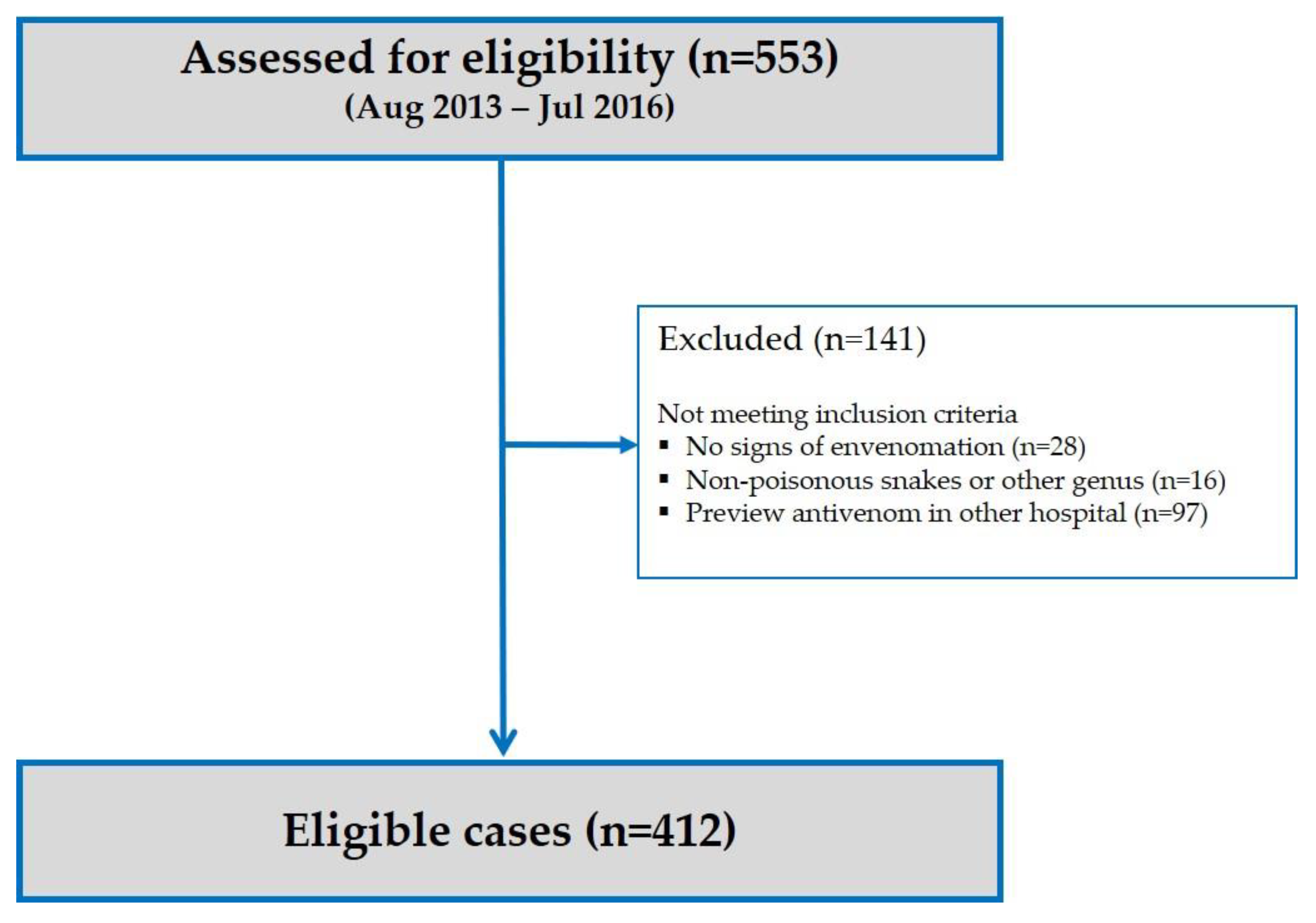
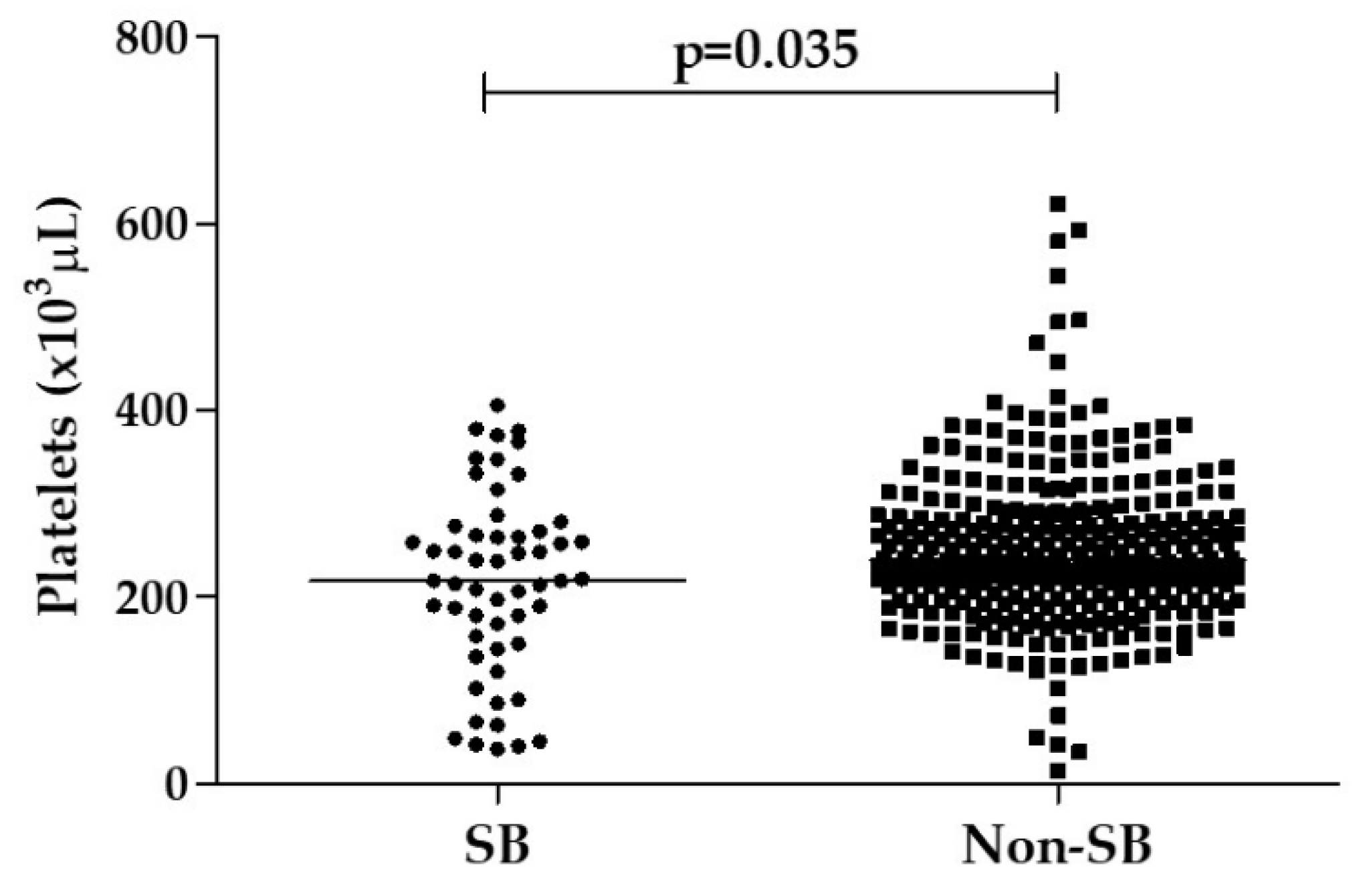
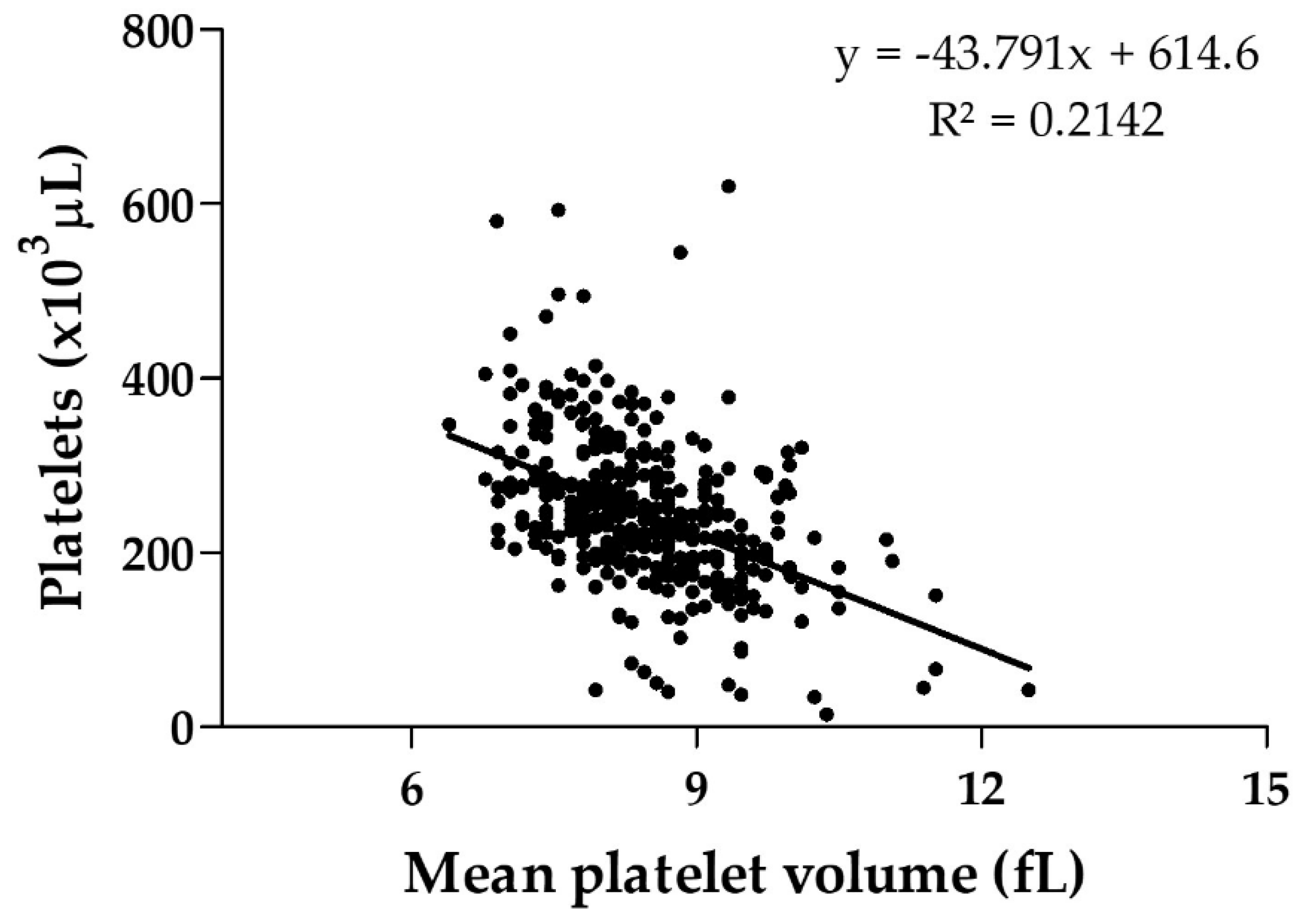
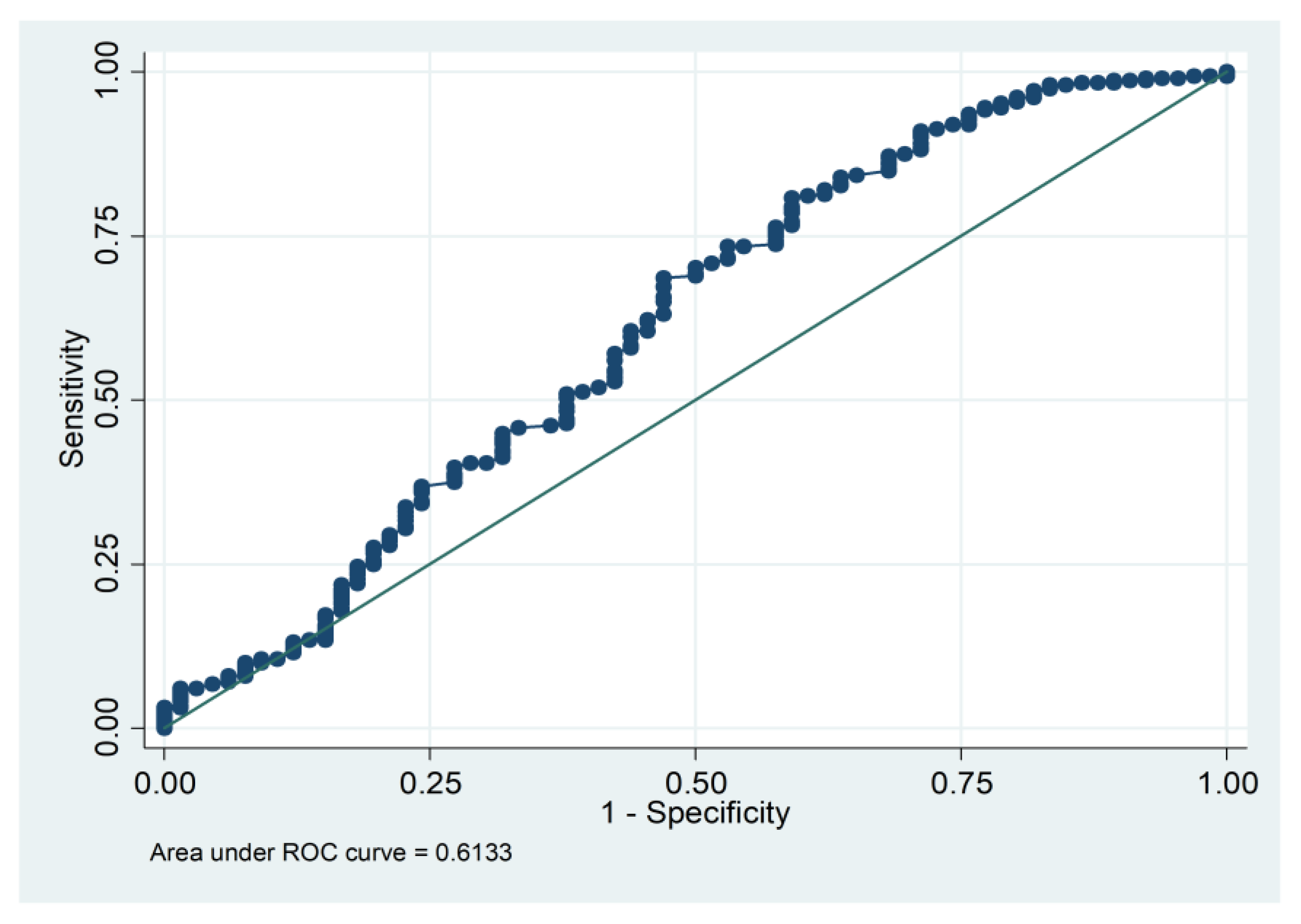
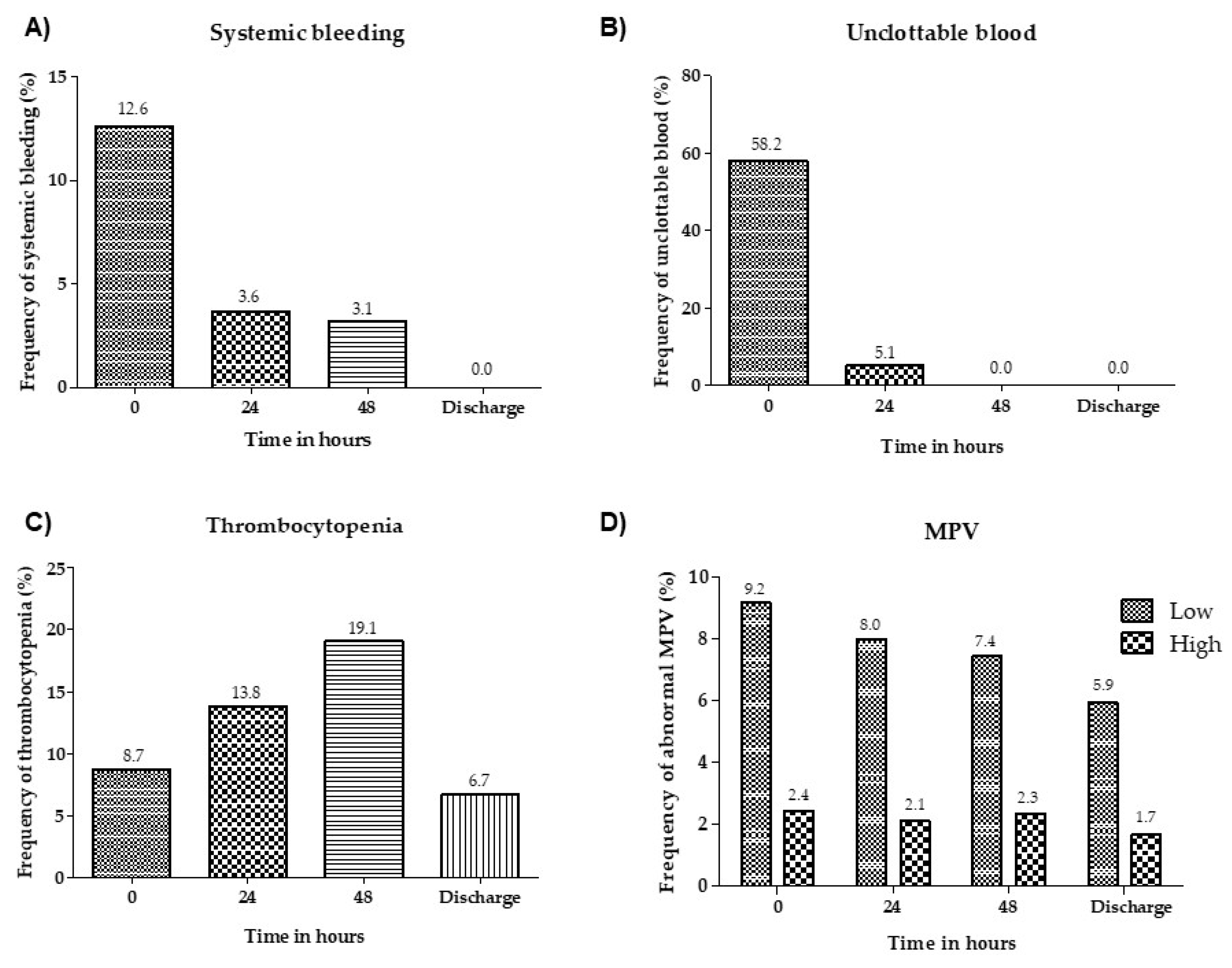
| Characteristics (n; Completeness) | Number | % |
|---|---|---|
| Gender (n = 412; 100%) | ||
| Male:female | 322:90 | |
| Age group in years (n = 412; 100%) | ||
| 0–10 | 41 | 10.0 |
| 11–20 | 83 | 20.2 |
| 21–30 | 83 | 20.2 |
| 31–40 | 60 | 14.6 |
| 41–50 | 54 | 13.1 |
| 51–60 | 51 | 12.4 |
| >60 | 40 | 9.7 |
| Geographic location of the snakebite incident (n = 411; 99.76%) | ||
| Capital (municipality of Manaus) | 236 | 57.4 |
| Municipalities of the interior of the Amazonas State | 171 | 41.6 |
| Other States | 4 | 1.0 |
| Area of occurrence (n = 410; 99.52%) | ||
| Rural | 365 | 89.0 |
| Urban | 45 | 11.0 |
| Work-related bite (n = 332; 80.58%) | ||
| Yes | 132 | 39.8 |
| Occupation (n = 171; 41.51%) | ||
| Rural worker | 85 | 49.7 |
| Other | 86 | 50.3 |
| Time-taken to reach to medical assistance (h) (n = 410; 99.52%) | ||
| 0–3 | 245 | 59.8 |
| 4–6 | 85 | 20.7 |
| >6 | 80 | 19.5 |
| Anatomical location of bite (n = 412; 100%) | ||
| Foot | 297 | 72.1 |
| Lower Leg | 59 | 14.3 |
| Thigh | 4 | 1.0 |
| Hand | 49 | 11.9 |
| Arm | 3 | 0.7 |
| Pre-hospital treatment | ||
| Tourniquets (n = 314; 76.21%) | 56 | 17.8 |
| Local incisions (n = 313; 75.97%) | 17 | 5.4 |
| Use of topical/oral medicines (n = 314; 76.21%) | 167 | 53.2 |
| Bothrops bite confirmation (n = 412; 100.0%) | ||
| Confirmed by snake identification | 135 | 32.8 |
| Clinical-epidemiological diagnosis | 277 | 67.2 |
| Variable | Number | % |
|---|---|---|
| Local manifestations (n = 412; 100%) | ||
| Pain | 385 | 93.9 |
| Swelling | 382 | 93.4 |
| Bleeding from fang punctures | 120 | 29.3 |
| Redness | 120 | 29.1 |
| Ecchymosis | 36 | 8.7 |
| Paresthesia | 35 | 8.5 |
| Haematoma | 8 | 1.9 |
| Blistering | 7 | 1.7 |
| Regional lymphadenopathy | 4 | 1.0 |
| Systemic alterations related to hemostasis | ||
| Unclottable blood (n = 386; 93.69%) | 224 | 58.2 |
| Bleeding (n = 412; 100%) | 52 | 12.6 |
| Trombocytopenia (n = 379; 91.99%) | 33 | 8.7 |
| Other systemic manifestations (n = 412; 100%) | ||
| Headache | 47 | 11.4 |
| Nausea | 44 | 10.7 |
| Vomiting | 40 | 9.7 |
| Blurred vision | 14 | 3.4 |
| Abdominal pain | 7 | 1.7 |
| Diarrhoea | 5 | 1.2 |
| Clinical severity of envenomation (n = 404; 98.06%) | ||
| Mild | 112 | 27.7 |
| Moderate | 219 | 54.2 |
| Severe | 73 | 18.1 |
| Comorbidities (n = 313; 75.97%) | ||
| Arterial hypertension | 29 | 9.3 |
| Diabetes | 8 | 2.6 |
| Hepatopathy | 4 | 1.3 |
| Cardiopathy | 3 | 1.0 |
| HIV/Aids | 1 | 0.3 |
| Time spent in hospital (days) | ||
| Mean (range) (n = 405, 98.30%) | 7 | (1–41) |
| Outcome (n = 411; 99.76%) | ||
| Discharged | 411 | 100.0 |
| Description | Number | % |
|---|---|---|
| Systemic bleeding (n = 412; 100%) | 63 | 15.3 |
| Conjunctival | 27 | 6.7 |
| Gingival | 26 | 6.3 |
| Macrohematuria | 18 | 4.4 |
| Haematemesis | 12 | 2.9 |
| Haemoptysis | 10 | 2.4 |
| Epistaxis | 10 | 2.4 |
| Ecchymosis | 7 | 1.7 |
| Enterorrhage | 5 | 1.2 |
| Metrorrhagia | 3 | 0.7 |
| Petechiae | 1 | 0.2 |
| From recent wound | 1 | 0.2 |
| Platelet Count | |||
|---|---|---|---|
| <50 × 10³/µL n (%) | 50–150 × 10³/µL n (%) | >150 × 10³/µL n (%) | |
| Systemic bleeding (n = 55; 100%) | 5 (9.1) | 8 (14.5) | 42 (76.4) |
| Conjunctival | 0 (0.0) | 2 (8.3) | 22 (91.7) |
| Gingival | 2 (8.3) | 4 (16.7) | 18 (75.0) |
| Macrohematuria | 1 (6.3) | 4 (25.0) | 11 (68.7) |
| Haematemesis | 2 (20.0) | 2 (20.0) | 6 (60.0) |
| Haemoptysis | 1 (11.1) | 3 (33.3) | 5 (55.6) |
| Epistaxis | 0 (0.0) | 1 (11.1) | 8 (88.9) |
| Ecchymosis | 0 (0.0) | 0 (0.0) | 5 (100.0) |
| Enterorrhage | 0 (0.0) | 1 (25.0) | 3 (75.0) |
| Metrorrhagia | 0 (0.0) | 1 (33.3) | 2 (66.7) |
| Petechiae | 1 (100.0) | 0 (0.0) | 0 (0.0) |
| From recent wound | 0 (0.0) | 0 (0.0) | 1 (100.0) |
| Description | SB (n) | % | Non-SB (n) | % | Crude OR (IC 95%) | p | Adjusted OR (IC 95%) | p |
|---|---|---|---|---|---|---|---|---|
| Sex | ||||||||
| Female | 15 | 16.7 | 75 | 83.3 | 0.88 (0.46–1.65) | 0.682 | ||
| Male | 48 | 14.9 | 274 | 85.1 | ||||
| Age group in years | ||||||||
| 0–10 | 6 | 14.6 | 35 | 85.4 | 1 | |||
| 10–20 | 14 | 16.9 | 69 | 83.1 | 1.18 (0.42–3.35) | 0.751 | ||
| 20–30 | 10 | 12.1 | 73 | 87.9 | 0.79 (0.27–2.37) | 0.687 | ||
| 30–40 | 7 | 11.7 | 53 | 88.3 | 0.77 (0.24–2.48) | 0.662 | ||
| 40–50 | 12 | 22.2 | 42 | 77.8 | 1.66 (0.57–4.90) | 0.353 | ||
| 50–60 | 8 | 15.7 | 43 | 84.3 | 1.08 (0.34–3.42) | 0.889 | ||
| >60 | 6 | 15.0 | 34 | 85.0 | 1.03 (0.30–3.51) | 0.963 | ||
| Area of occurrence | ||||||||
| Urban | 3 | 6.7 | 42 | 93.3 | 2.75 (0.83–9.18) | 0.099 | 2.28 (0.66–7.84) | 0.190 |
| Rural | 60 | 16.4 | 305 | 83.6 | ||||
| Time-taken to reach to medical assistance (h) | ||||||||
| 0–3 | 30 | 12.2 | 215 | 87.8 | 1 | 1 | ||
| 4–6 | 15 | 17.6 | 70 | 82.4 | 1.54 (0.78–3.02) | 0.214 | 0.83 (0.37–1.85) | 0.644 |
| >6 | 18 | 22.5 | 62 | 77.5 | 2.08 (1.08–3.98) | 0.027 | 1.83 (0.88–3.79) | 0.103 |
| Pre-hospital treatment | ||||||||
| Yes | 33 | 14.4 | 197 | 85.6 | 0.92 (0.46–1.84) | 0.802 | ||
| No | 13 | 15.5 | 71 | 84.5 | ||||
| Comorbidities | ||||||||
| Yes | 8 | 17.8 | 37 | 82.2 | 1.24 (0.51–3.01) | 0.637 | ||
| No | 22 | 14.9 | 126 | 85.1 | ||||
| Unclottable blood | ||||||||
| Yes | 48 | 21.4 | 176 | 78.6 | 3.72 (1.86–7.42) | <0.001 | 3.11 (1.53–6.31) | 0.002 * |
| No | 11 | 6.8 | 150 | 93.2 | ||||
| Low hemoglobin | ||||||||
| Yes | 11 | 17.7 | 51 | 82.3 | 1.29 (0.63–2.67) | 0.486 | ||
| No | 44 | 14.3 | 264 | 85.7 | ||||
| Low hematocrit | ||||||||
| Yes | 5 | 11.1 | 40 | 88.9 | 0.68 (0.26–1.81) | 0.444 | ||
| No | 50 | 15.5 | 273 | 84.5 | ||||
| Thrombocytopenia | ||||||||
| Yes | 13 | 39.4 | 20 | 60.6 | 4.71 (2.18–10.15) | <0.001 | 4.52 (2.03–10.09) | <0.001 * |
| No | 42 | 12.1 | 304 | 87.9 | ||||
| Mean platelet volume | ||||||||
| Low | 5 | 14.7 | 29 | 85.3 | 1 | 1 | ||
| Normal | 44 | 13.5 | 282 | 86.5 | 0.91 (0.33–2.46) | 0.845 | 0.70 (0.24–2.00) | 0.503 |
| High | 4 | 44.4 | 5 | 55.6 | 4.64 (0.92–23.48) | 0.064 | 3.46 (0.56–21.55) | 0.182 |
© 2019 by the authors. Licensee MDPI, Basel, Switzerland. This article is an open access article distributed under the terms and conditions of the Creative Commons Attribution (CC BY) license (http://creativecommons.org/licenses/by/4.0/).
Share and Cite
Oliveira, S.S.; Alves, E.C.; Santos, A.S.; Pereira, J.P.T.; Sarraff, L.K.S.; Nascimento, E.F.; De-Brito-Sousa, J.D.; Sampaio, V.S.; Lacerda, M.V.G.; Sachett, J.A.G.; et al. Factors Associated with Systemic Bleeding in Bothrops Envenomation in a Tertiary Hospital in the Brazilian Amazon. Toxins 2019, 11, 22. https://doi.org/10.3390/toxins11010022
Oliveira SS, Alves EC, Santos AS, Pereira JPT, Sarraff LKS, Nascimento EF, De-Brito-Sousa JD, Sampaio VS, Lacerda MVG, Sachett JAG, et al. Factors Associated with Systemic Bleeding in Bothrops Envenomation in a Tertiary Hospital in the Brazilian Amazon. Toxins. 2019; 11(1):22. https://doi.org/10.3390/toxins11010022
Chicago/Turabian StyleOliveira, Sâmella S., Eliane C. Alves, Alessandra S. Santos, João Pedro T. Pereira, Lybia Kássia S. Sarraff, Elizandra F. Nascimento, José Diego De-Brito-Sousa, Vanderson S. Sampaio, Marcus V.G. Lacerda, Jacqueline A.G. Sachett, and et al. 2019. "Factors Associated with Systemic Bleeding in Bothrops Envenomation in a Tertiary Hospital in the Brazilian Amazon" Toxins 11, no. 1: 22. https://doi.org/10.3390/toxins11010022
APA StyleOliveira, S. S., Alves, E. C., Santos, A. S., Pereira, J. P. T., Sarraff, L. K. S., Nascimento, E. F., De-Brito-Sousa, J. D., Sampaio, V. S., Lacerda, M. V. G., Sachett, J. A. G., Sano-Martins, I. S., & Monteiro, W. M. (2019). Factors Associated with Systemic Bleeding in Bothrops Envenomation in a Tertiary Hospital in the Brazilian Amazon. Toxins, 11(1), 22. https://doi.org/10.3390/toxins11010022






